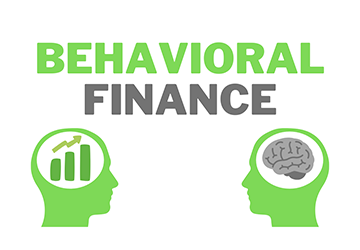How Behavioral Finance Influences Your Investment Decisions
Understanding behavioural finance and grasping the intricacies of how behavioural finance and investing intersect is paramount for making superior investment choices. Traditional finance postulates that investors are rational, perpetually seeking to optimize their returns. Nevertheless, behavioural finance elucidates that investors frequently behave irrationally due to psychological influences and biases.

Critical Concepts in Behavioral Finance
Behavioral finance amalgamates psychology and economics to explain why and how investors make decisions. Here are some pivotal concepts:
- Anchoring: The propensity to overly rely on the initial piece of information encountered.
- Overconfidence: Overestimating one's prowess in predicting market movements.
- Loss Aversion: Preferring to circumvent losses rather than acquiring equivalent gains.
These behaviours can profoundly impact investment decision psychology, culminating in suboptimal investment outcomes.
How Behavioral Finance Impacts Investment Decisions
Emotional Investing
In understanding behavioural finance, emotions significantly influence investment decision psychology. Fear and greed are potent emotions that can precipitate impulsive buying or selling, often at inopportune times. For instance:
- During a market downturn, fear can impel investors to liquidate assets at a loss.
- During a market boom, greed can lead to overinvestment in overvalued assets.
Herd Behavior
Herd behaviour denotes investors following the collective. This phenomenon can be observed during market bubbles when behavioural finance and investing converge, leading investors to inflate prices, only for them to plummet collectively. Examples include:
- The Dot-com bubble of the late 1990s.
- The housing bubble of the mid-2000s.
Cognitive Biases
Cognitive biases, such as confirmation bias and hindsight bias, can distort investment decision psychology. Investors might:
- Seek out information that corroborates their preconceived notions.
- Believe they foresaw an event after it has transpired, influencing future decisions.
Applying Behavioral Finance Principles to Improve Investment Decisions
Diversification
One method to mitigate the impact of behavioural biases is through diversification. By dispersing investments across various asset classes, investors can attenuate the risk associated with emotional and irrational decisions.
Setting Clear Goals
Establishing clear, long-term investment objectives can aid investors in remaining focused and eschewing decisions predicated on short-term market fluctuations influenced by behavioural finance and investing.
Regular Reviews
Regularly evaluating investment portfolios can assist in identifying and rectifying biases; this involves:
- Assessing performance vis-à-vis goals.
- Rebalancing the portfolio to sustain the desired asset allocation.
Seeking Professional Advice
Understanding behavioural finance by engaging with financial advisors can provide impartial guidance, assisting investors in making more informed decisions. Advisors can:
- Identify biases in decision-making.
- Propose strategies to counteract emotional and irrational behaviours.
The Future of Behavioral Finance in Investing
Technological Advancements
Technological advances like artificial intelligence and machine learning are used to analyze behavioural finance and investing patterns. These technologies can:
- Predict market trends predicated on investor behaviour.
- Develop tools to aid investors in making rational decisions.
Behavioral Finance Education
Enhancing awareness and education about behavioural finance can empower investors to recognize and facilitate their biases; this can lead to:
- More rational investment decisions.
- Enhanced overall market efficiency.
Cognitive and Emotional Factors in Behavioral Finance
Mental Accounting
In understanding behavioural finance, mental accounting represents a cognitive bias where individuals categorize money based on its origin or intended use; this can precipitate irrational spending and investment decisions, ultimately compromising financial health. Investors might:
- Segregate funds differently for savings and investments based on arbitrary classifications.
- Neglect the interchangeability of money, resulting in suboptimal financial management.
Prospect Theory
Prospect theory posits that individuals appraise gains and losses asymmetrically, fostering risk-averse behaviour and risk-seeking behaviour for losses; this can lead to:
- Reluctance to realize gains, manifesting in the "disposition effect."
- Excessive investment in underperforming stocks in a bid to recover losses.
Self-Control Issues
Investors frequently grapple with self-control issues, culminating in inconsistent saving and investing practices. Strategies to mitigate this include:
- Establishing automatic contributions to savings and investment accounts.
- Implementing stringent budgetary constraints to avert overspending.
Advanced Strategies to Overcome Behavioral Biases
Pre-Commitment Strategies
Pre-commitment entails making decisions in advance to counteract future impulsive behaviours; this can be accomplished through:
- Instituting automatic investment plans.
- Pre-establishing asset allocation strategies.
Utilizing Decision Aids
Decision aids, such as robo-advisors and financial planning tools, can alleviate biases by offering data-driven recommendations. These tools can:
- Provide impartial, algorithm-based advice.
- Aid investors in maintaining discipline by adhering to a predetermined plan.
The Role of Behavioral Finance in Wealth Management
Personalized Financial Planning
Integrating behavioural finance and investing principles into financial planning can yield more customized advice that reflects an individual's psychological profile. Wealth managers can:

- Adapt investment strategies to align with the client's risk tolerance and behavioural inclinations.
- Offer behavioural coaching to assist clients in adhering to their financial plans.
Behavioral Portfolio Theory
Behavioural portfolio theory suggests that investors construct portfolios based on layers of goals and emotions rather than solely maximizing returns; this can encompass:
- Formulating a core portfolio for long-term security.
- Establishing satellite investments for speculative opportunities, catering to varying risk appetites.
Case Studies in Behavioral Finance
The 2008 Financial Crisis
The 2008 financial crisis underscored the influence of behavioural finance and investing on global markets. Cognitive biases and emotional decision-making were pivotal in the crisis, including:
- Overconfidence among financial institutions concerning mortgage-backed securities.
- Herd behaviour inciting widespread panic and massive sell-offs.
The GameStop Saga
The GameStop stock surge in early 2021 illustrated how investment decisions psychology can precipitate market anomalies. Critical factors included:
- The impact of social media on investor behaviour.
- Herd behaviour driving rapid price escalations and subsequent volatility.
Practical Tips for Investors
Behavioural Self-Awareness
Understanding behavioural finance and awareness of one's biases is the initial step towards mitigating their influence. Investors can:
- Analyze past investment decisions to discern patterns of irrational behaviour.
- Keep a journal to document emotions and thoughts during significant market events.
Stress Testing Portfolios
Regularly stress-testing investment portfolios can prepare investors for market volatility influenced by behavioural finance and investing dynamics; this entails:
- Simulating diverse market scenarios to assess portfolio resilience.
- Modifying asset allocations based on stress test results to manage risk effectively.
Conclusion
Understanding behavioural finance and investing is indispensable for making superior investment decisions. By recognizing the psychological influences and biases that affect investment decisions, investors can take measures to mitigate their impact. Implementing principles such as diversification, establishing clear goals, and seeking professional advice can assist investors in making more rational and informed decisions. As technology and education in behavioural finance continue to advance, the potential for improved investment outcomes escalates, benefiting individual investors and the market as a whole.





